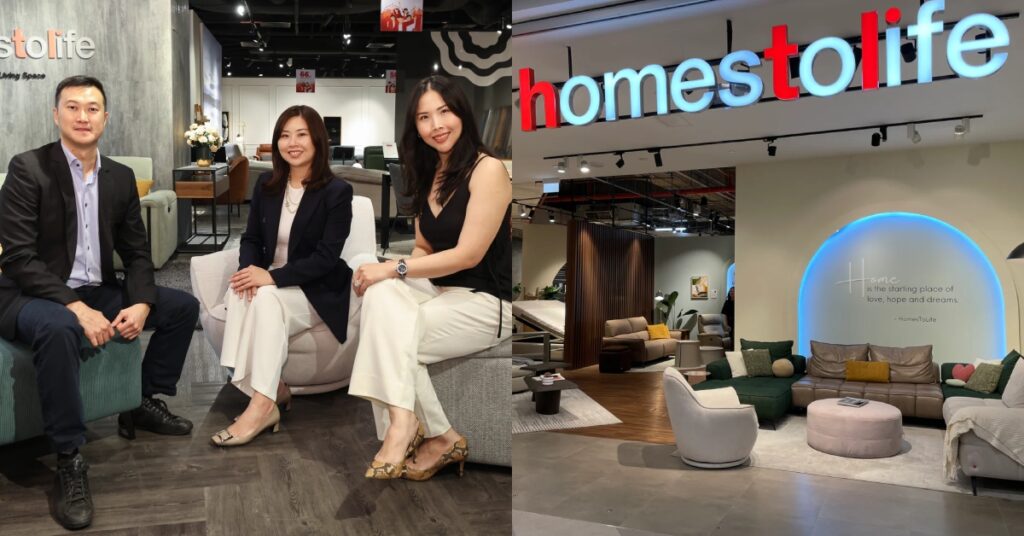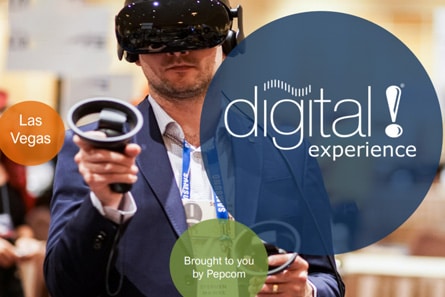
HomesToLife grew from a Singapore sofa workshop to a global furniture powerhouse
When you think of luxury leather sofas or contemporary furniture, Singaporean brands might not immediately come to mind. Yet, HomesToLife—the family-run furniture brand with a legacy spanning over 50 years—has quietly built a transnational empire across Asia, Europe, and North America.
From leather hides sourced in Australia and South America to customisable sofas delivered to more than 5,000 retail points worldwide, the company has grown into a global furniture brand—a far reach from its beginnings as a local upholstery workshop.
We spoke with Phua Mei Ming, CEO of HomesToLife and the daughter of founder Phua Yong Tat, who has been immersed in the business for over 25 years, to learn more about the business’s journey. She now runs the company alongside her sister, Celeste Phua, Head of Communications and Retail Branding, and their cousin Phua Jing Yuh, who oversees procurement for the leather business unit.
Together, they are carrying forward the family legacy, with six retail brands under their belt and being a large supplier of white-label furniture worldwide.
A family business rooted in craftsmanship
HomesToLife began as Hwa Tat Lee in 1976, when Phua Yong Tat and his brothers Yong Pin and Yong Sin opened a sofa upholstery workshop on Lowland Road, becoming among Singapore’s first sofa makers.
Recognising growing local demand for upholstered furniture, the brothers supplied white-label PVC sofas to retailers such as Courts by the following year, establishing a reputation for quality craftsmanship that would become the foundation of their family enterprise.

In the 1980s, they forged a manufacturing partnership with one of the oldest manufacturers of leather sofas in Germany, Laauser GmbH, where they acquired technical expertise for production and product development. The company also formalised its operations under the name Hwa Tat Lee Leather, marking a move from domestic sales into exporting, with its first significant deal supplying furniture to Brunei.
Over the decades, the company evolved through several name changes before settling on HomesToLife Ltd as the holding company overseeing a portfolio of subsidiaries. Its tannery operations—where animal hides are processed into leather—were originally based in Singapore but relocated to China in the early 2000s to strengthen its export capabilities.

Its other subsidiaries include German furniture brand Domicil, which the brand acquired distribution rights in 2005. Fabbrica and Corium Italia were later added, opening doors to the higher-end furniture segment in its offerings.
After years of sourcing and processing leather and B2B furniture manufacturing for its retail partners across the globe, HomesToLife’s first direct-to-consumer retail brand was launched in 2013. Just a year later, it launched two other brands, Gallery and RelaxStudio, to focus on contemporary and motion-focused furniture, respectively.
Initially, the company sold its products online and through overseas retail partners, with dedicated in-store sections showcasing its brands. In 2015, it tested direct-to-consumer retail with a pop-up at the former 112 Katong shopping mall, before building its first flagship store, measuring four storeys high and 7,000 square feet at Mohamed Sultan Road in Jul 2016.
This approach allowed the team to gather customer insights, refine operations, and shape the retail experience that would later define the brand.
At its peak in 2024, HomesToLife operated six stores across Singapore before streamlining to four key locations to focus on both local and international markets. Each store showcases all six of the company’s brands, including those it has acquired.
Expansion into overseas markets
Beyond Singapore, HomesToLife had established a robust presence in various Asian markets by 2020, including Japan, Hong Kong, and Taiwan. A key driver of HomesToLife’s expansion lies in its distinction as an integrated supply-chain provider.

It coordinates all aspects of its products’ journey, from design and product development for both its own brands and white-label offerings, to management of sourcing and manufacturing partners, and logistics and distribution services, including channel management.
We understand the entire integrated chain — from product design to manufacturing to delivery. That’s our advantage; it allows us to speak in the language of our partners and customers. We are the only furniture company that controls the leather supply chain completely.
Phua Mei Ming, CEO of HomesToLife
In 2021, the company began exploring expansion in India, following recommendations from EnterpriseSG as part of a bilateral collaboration. Through consultations with EnterpriseSG, HomesToLife gained valuable insights into local business practices, market compliance requirements, and potential manufacturing partners via the agency’s offices in Delhi and Mumbai.
That same year, the company established a factory with partners in Chennai and offices in Bangalore and Mumbai, totalling more than 28,000 sqft, serving wholesale furniture buyers across India.

For its Indian manufacturing partners, the brand’s CEO highlighted that the collaboration proved invaluable. “It was attractive for our partners in India to learn how to produce at this level of quality,” Mei Ming noted. “We also help them become self-sustaining instead of relying heavily on imports,” she added.
In May 2025, HomesToLife acquired upholstered sofas and leather tanning company, HTL Marketing, that was originally founded by the same group but had operated independently with separate operations and financials until the acquisition.
The acquisition further propelled HomesToLife’s growth, allowing it to expand beyond Asia into Europe and North America. It also strengthened HomesToLife Ltd’s global supply chain network.
For HomesToLife, market selection is a meticulous process that considers market size, consumption, import percentages, and GDP. “While we offer great value, we are not a mass-market player,” Mei Ming explained.

HomesToLife adapts its approach based on each market. For instance, before expanding into Seoul earlier this year, the company first experimented with pop-up stores to gauge consumer response.
Observing that Korean department stores are typically multi-level malls with dedicated furniture sections, HomesToLife tailored its strategy by launching pop-ups within these retail spaces. The success of these trials eventually led to the establishment of a permanent retail store in Yongin-si, just outside Seoul.
By strategically planning its expansion, HomesToLife Ltd now operates across 1,400 partnerships and over 5,000 retail points worldwide. It exports its products, including white-label offerings, to around 50 countries through an extensive network of sales partners and retailers.
Currently, Europe remains the company’s strongest market, accounting for around 60% of sales over recent years, followed by Asia-Pacific and then North America.
The “heartbeat” of HomesToLife’s growth

Like many family businesses, HomesToLife faced early challenges in making Asian-sourced furniture credible against European competitors.
However, German engineering and production methods informed HomesToLife’s approach, while international designer collaborations ensured products appealed to sophisticated markets like Japan, France, and the UK.
For both its retail brands and white-label offerings, over 1,500 designs are developed with leading international designers, out of which at least 700 new designs and 10,000 customisable SKUs with product attributes such as various colours, size, and functionalities are offered annually, enabling “impact customisation”—tailored selections without the full bespoke costs.
“Our R&D has always been the heartbeat of our growth. Since the early 2010s, we collaborated with talented designers globally, producing thousands of original products that have become bestsellers,” said Celeste.
One of these products is HomesToLife’s HomeStage series, a collaboration with designer Toh Chye Seng, bringing an immersive sofa concept to life—it delivers a 4D experience with touchscreen controls, sound systems, massage functions, and ambient lighting.

Today, the company thrives on intellectual property rather than heavy capital investment, with R&D central to growth, said Celeste.
Apart from R&D innovation, HomesToLife’s diversified global operations have also helped shield it from regional instabilities. With a presence in Europe, Asia-Pacific, and North America, the company has navigated geopolitical tensions and pandemic-related disruptions while maintaining stability and predictability for its retail partners.
These strategies and steady growth culminated in HomesToLife’s listing on NASDAQ in 2024, a pivotal milestone that enabled the company to raise capital for further expansion into overseas markets.
Looking ahead

In recent years, Mei Ming realised that furniture is increasingly treated like fashion, with shorter product life cycles and demand for personalised, functional, and innovative pieces.
Different markets are evolving in their own ways as well. Western consumers often seek technology-driven features, while Asian consumers increasingly prefer multifunctional simplicity.
HomesToLife is incorporating digitalisation throughout operations, allowing partners to track shipments globally, while leveraging AI and digital tools to accelerate product design and personalisation.
Asia remains a key growth engine, with a focus on future target markets such as India and China. The company’s five-year goal is to cement HomesToLife as a global leader in design-led furniture and integrated supply-chain excellence.
At its core, HomesToLife remains a family business guided by a simple principle: customer success drives company success.
“If we’re not creating real value for our customers, we become irrelevant. It’s a win-win-win: we win, our customers win, and their customers win,” Mei Ming reflected.
Also Read: “Furniture Was Either IKEA Or Expensive” – How Castlery Grew A Multimillion Biz From A Basement
Featured Image Credit: HomesToLife
Last modified: October 28, 2025







